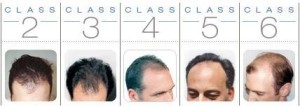 We all grow hair everywhere on our skin except a few places, for example our lips, palms of our hands, and also palms of our feet. Much of our hair is so small and so tiny that we can’t even see it. Hair is formed in follicles in our pores and skin by the production of a protein called keratin. Hair goes through 3 cycles, growing, transitory, and also resting. During the growing cycle, called the anagen cycle, the hair will grow at a rate of up to 6 inches long per year, for a time period of 3-6 years. As individuals age, the rate their hair grows at slows. There are on average about 100,000 to 150,000 hairs on the adult head. Under normal conditions, we drop about 100 daily, and these are replaced with new hairs. Roughly 90 % of the hair on your head at any given time should be in the growing cycle.
We all grow hair everywhere on our skin except a few places, for example our lips, palms of our hands, and also palms of our feet. Much of our hair is so small and so tiny that we can’t even see it. Hair is formed in follicles in our pores and skin by the production of a protein called keratin. Hair goes through 3 cycles, growing, transitory, and also resting. During the growing cycle, called the anagen cycle, the hair will grow at a rate of up to 6 inches long per year, for a time period of 3-6 years. As individuals age, the rate their hair grows at slows. There are on average about 100,000 to 150,000 hairs on the adult head. Under normal conditions, we drop about 100 daily, and these are replaced with new hairs. Roughly 90 % of the hair on your head at any given time should be in the growing cycle.
There are lots of types of hair loss. Each type of hair loss has its own cause, and may present with various patterns. Here is a list of the different types of hair fall, each with a brief description.
Involutional alopecia is hair fall that is a natural, slow hair loss in which the hair begins to thin with age. It is caused by a higher percentage of hair entering the 3rd cycle, the telegen phase which is also referred to as a resting phase. During the resting phase, which may last up to 3 months, the hair doesn’t grow and will eventually be drop.
Androgenic alopecia impacts men and women. It is a hereditary condition that’s the reason behind male pattern baldness. It can impact someone into their early 20s, or even their teenagers. Females are typically not affected until their 40’s.
Alopecia areata impacts children and teenagers mostly, and it causes a patchy type of hair fall. It may cause full baldness. Generally all the hair fall is short-term.
Alopecia universalis impacts all the hair of the body, causing loss all over the place including, pubic hair, eye lashes, and also eye brows.
Trichotillomania is the condition in which a individual pulls their own hair out. It is a emotional condition affecting mostly kids.
Telegen effluvium is usually short term. The cause is unfamiliar, but for some reason a huge number of hairs enter the 3rd stage, the resting stage, at the same time and after that fall out. The hair is later regrown.
Hair loss is not anything anyone look forward to. If you are suffering from hair loss, you should see your dermatologist to discover which type of hair loss that you’ve. Based on the type, it is sometimes possible to reverse hair fall by altering medicines, improving diet plan, using a hair growth solution, or other means. The success of your treatment method will depend in large part on what the root cause is. Be ready though, because a large amount of hair loss is permanent. Only your skin doctor can determine if the hair loss can be reversed or not.
Read more:
Our Hair Loss Product’s are Great for Hair Loss treatment: http://goo.gl/o1m0Cq
Subscribe On YouTube: https://www.youtube.com/channel/UCkBHXd8-CDbSdCNe9FYfiNA
Follow Us On Twitter: https://twitter.com/hairlossgroup
